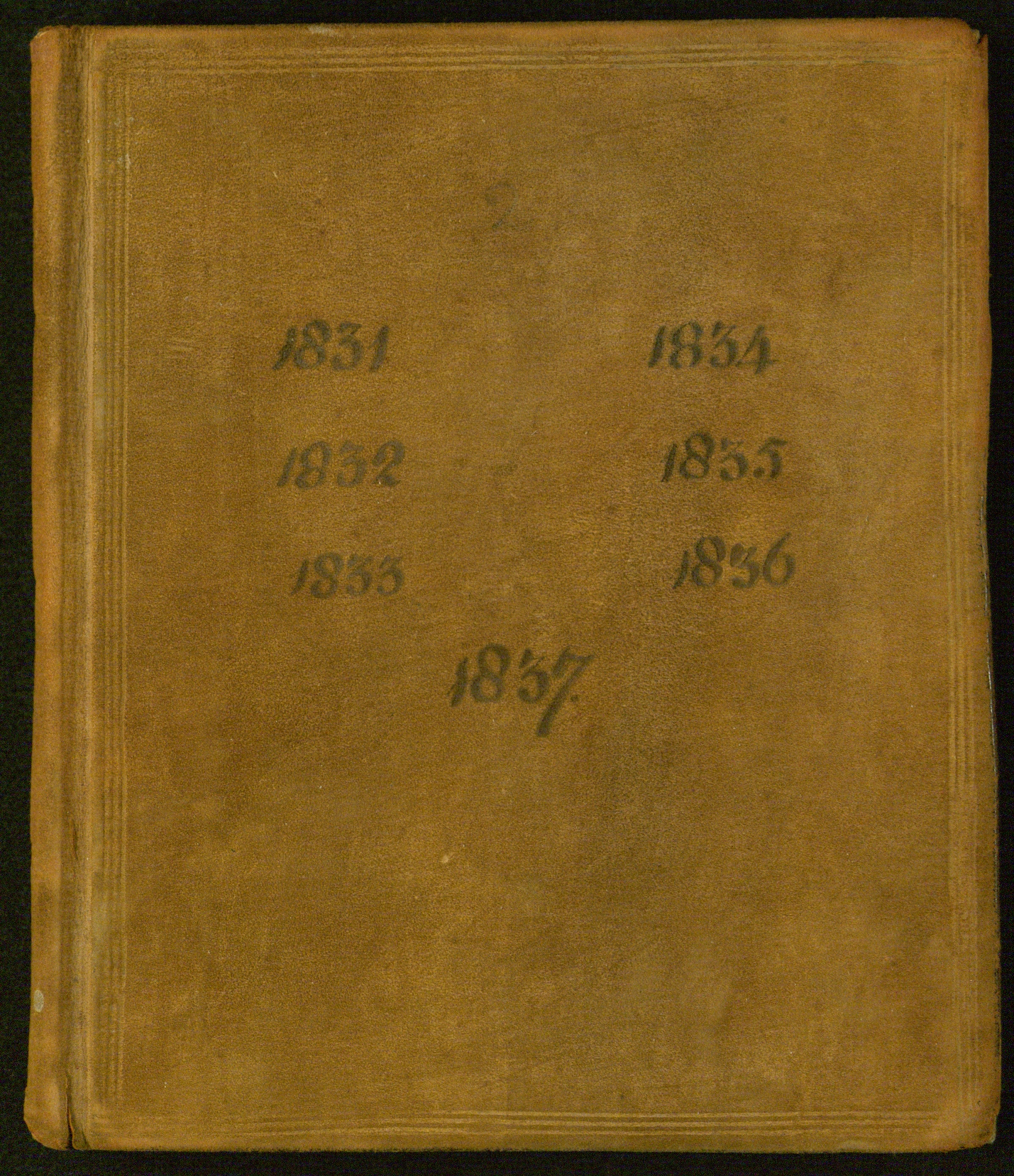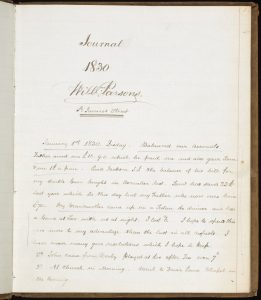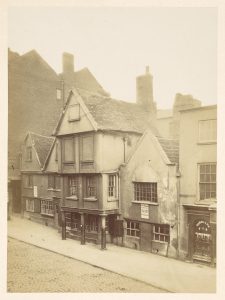
September 22, 2022, by Sarah Colborne
Around with William Parsons
This is a guest post by Dr David Beckingham, Associate Professor in Cultural and Historical Geography at the University of Nottingham and curator of the exhibition ‘Last Orders: stories of alcohol and abstinence in the East Midlands’.
The task of putting together this exhibition was enabled by the cataloguing work of colleagues and volunteers at Manuscripts and Special Collections. So detailed are some entries, that my task in the reading room was often less about reading documents to discover vital information and more thinking about how items might work when displayed in the gallery.
The diaries of local solicitor and councillor William Parsons are catalogued in brilliant detail, with rich descriptions of the contents of the volumes that he produced between 1830 and 1881. Amongst entries on Nottingham events, and his business and political affairs, I knew to expect that stories from the fun-loving Parsons would be shadowed by regular resolutions ‘to live a more sober and serious life’ (catalogue entry for MS 489). That contrast would be ideal for an exhibition investigating tensions around drinking.

With all the promise of a New Year, the first diary of William Parsons begins: “I have made many good resolutions which I hope to keep”, 1-3 January 1831. MS 489/1
Such detail in catalogues can allow researchers to focus in on very specific topics, speeding up the process of finding items to order at the archive reading room. Despite the information already available from the catalogue, there can be no smash and grab scholarship with these diaries. For they contain too much interesting material, so many leads to pursue to build a fuller picture of the people and events of old Nottingham.
Parsons is compelling company. After working through all the diaries and planning the displays, I spent time thinking about how best to include the diaries. He did not keep them for our audience, after all. As such, in the central cases of the exhibition, we have displayed the volumes of diaries alongside printouts with additional quotations to try to do justice to the full range of experiences and emotions that Parsons had with and towards drink.
Visitors can read extracts from the diaries and follow Parsons around town, reading stories about his nights out, the company he kept, and the types of drinks he consumed. I have tried to match discussions in his diaries to other materials in the archive that illustrate places such as the Flying Horse, where he drank, and some of the characters he met.

Photograph of Flying Horse, from Frederick Williams, Nottingham Past and Present (1877). East Midlands Special Collection, Not 3.D14 WIL
‘Went into a show, being March Fair. And saw a tame hare play upon a tabor or tambourine, fire a pistol off and fight with a cat, each standing on its hind legs and striking with its fore feet. I thought it an extraordinary attainment of docility for so wild an animal as a hare. Thence went to Flying Horse for brandy and water and cigars. The pugilists Bendigo and Caunt were there and a large mixed company and I staid late and came home in a fly.’
Extract from the diary of William Parsons, 8 March 1850. MS 489/5
Some of Parsons’s stories are funny, often tragi-comic. Here, the diaries are important because of the very personal struggles around alcohol that they communicate. At times, it is almost hard to read Parsons repeat this pledge to avoid drink. I wanted this to come across, and not simply reproduce stories of his scrapes. These tensions are why we placed Parsons in the central exhibition cases: they are the symbolic and not simply physical heart of the exhibition.
‘Tea totalism in my position is not carried out without great difficulty: indeed the conventional uses of the society in which I mix are so opposed that I am reduced to the necessity of abandoning the principle or the society. The latter is undesirable and in me would be wrong.’
Extract from the diary of William Parsons, 19 August 1846. MS 489/5
Parsons felt that total abstinence was hard for a man in his position but was frustrated at his inability to manage his drinking, particularly as he aged. Although he didn’t keep his diaries consistently, their overall span across some fifty years allows us to read Parsons’s battles in relation to life course events: the development of his career; the places where he lived; his marriage and birth of his son; and periods of health and illness – some of the latter self-inflicted.
The point about change with age speaks well to the theme of third and final public talk related to the exhibition. On Tuesday 4 October, Dr Katy Jones of the School of Medicine will explore current research into whether patterns of alcohol consumption change in different life stages. Event and ticket details can be found on the talks section of the exhibition webpage.
Links
Curator Dr David Beckingham introduces the diaries in the first film on the exhibition webpage: https://www.nottingham.ac.uk/manuscriptsandspecialcollections/exhibitions/online/last-orders/index.aspx
We are posting excerpts from the diaries on the exhibition Twitter page: https://twitter.com/msslakeside
Read more about the diaries by consulting the catalogue entry: https://mss-cat.nottingham.ac.uk/Calmview/TreeBrowse.aspx?src=CalmView.Catalog&field=RefNo&key=MS489
Former Document Production Assistant and volunteer at Manuscripts and Special Collections Matt Heald prepared a blog about Parsons: https://blogs.nottingham.ac.uk/manuscripts/2016/03/07/32001/
No comments yet, fill out a comment to be the first

Leave a Reply